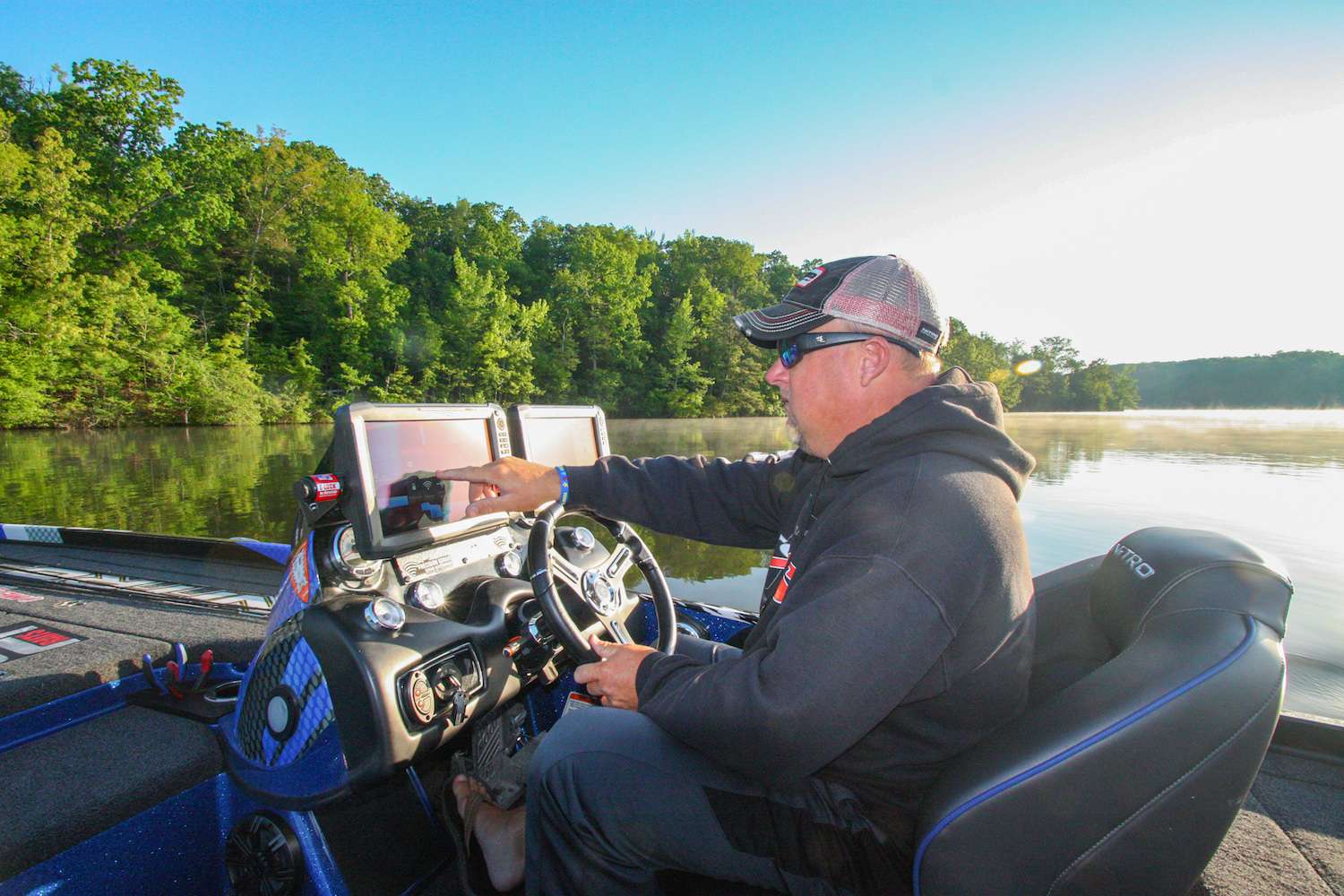
7 HOURS LEFT6:38 a.m. Itâs 55 degrees and clear when we arrive at Lake L. Hartman pulls several Cashion rods equipped with Lewâs and Shimano reels from storage. What pattern does he anticipate will be operative today? âBass donât all spawn at once, so some fish could be spawning while others are in the immediate postspawn phase. Either way, they should be shallow. My preference, and frankly my greatest strength, as a tournament angler is offshore fishing, but Iâll deal with whatever conditions I find.â6:55 a.m. We launch the Nitro. Lake L is dead calm. Hartman checks the water temp: 70 degrees. âThatâs leaning more toward postspawn, but the lake looks pretty clear, so if there are any bedding fish, we should be able to see âem. Having no cloud cover, I want to hit some shady spots first.â 7 a.m. Hartman idles into a nearby cove and makes his first casts of the day with a bone-colored Heddon Zara Spook topwater stickbait. âPostspawn bass are usually sluggish, but theyâll hit a slow-moving surface bait like this Spook.â He scans the bottom for light-colored patches indicating spawning beds but doesnât spot any. 7:06 a.m. Some baitfish are flipping on the surface. Hartman points to a light patch beneath an overhanging bush. âThat looks like a bed, but there are no fish on it.â 7:11 a.m. Hartman moves a Âquarter-mile uplake and dog-walks the Spook around the mouth of a short tributary arm. 7:14 a.m. He switches to a half-ounce white Recon bladed jig with a matching Tattle Tail trailer, both by Riot Baits. 7:15 a.m. Hartman rigs a green pumpkin Riot Baits Fuzzy Beaver creature on a 4/0 straight-shank hook with a 3/8-ounce tungsten sinker, unpegged. âI donât peg my sinkers during spawning season. I donât want the fish to feel any weight when it picks up the lure to carry it off the nest.â He flips the creature into a laydown tree. 7:17 a.m. Back to the bladed jig. He spots a keeper fish on a bed and marks its waypoint on his GPS. âIâll check back here later to see if his big girlfriend has moved onto the nest.â
7:19 a.m. Hartman moves to the back of the cove and chunks a Strike King KVD 1.5 squarebill crankbait (copper perch) to shoreline cover. 7:24 a.m. He flips the creature to a submerged tree. 7:37 a.m. Moving to the opposite shore of the cove, Hartman flips the creature to a series of laydowns. âThis cover looks good from a distance, but a lot of it is really shallow.â 7:51 a.m. Hartman races to the lower end of the lake and flips scattered wood with a generic green pumpkin brush hog creature.
6 HOURS LEFT7:55 a.m. Nearing the dam, Hartman cranks riprap with the squarebill. âThese rocks are mainly piled up along shore and donât run out into the lake very far.â 8:01 a.m. He pitches the brush hog to the dam, gets a tap, swings and misses. âJust nipped the tail.â 8:06 a.m. Hartman cranks the 1.5 parallel to the dam. âIt drops off to 12 feet fast here, and this lure runs too shallow to hit bottom. A squarebill is pretty much useless if it isnât deflecting off something.â
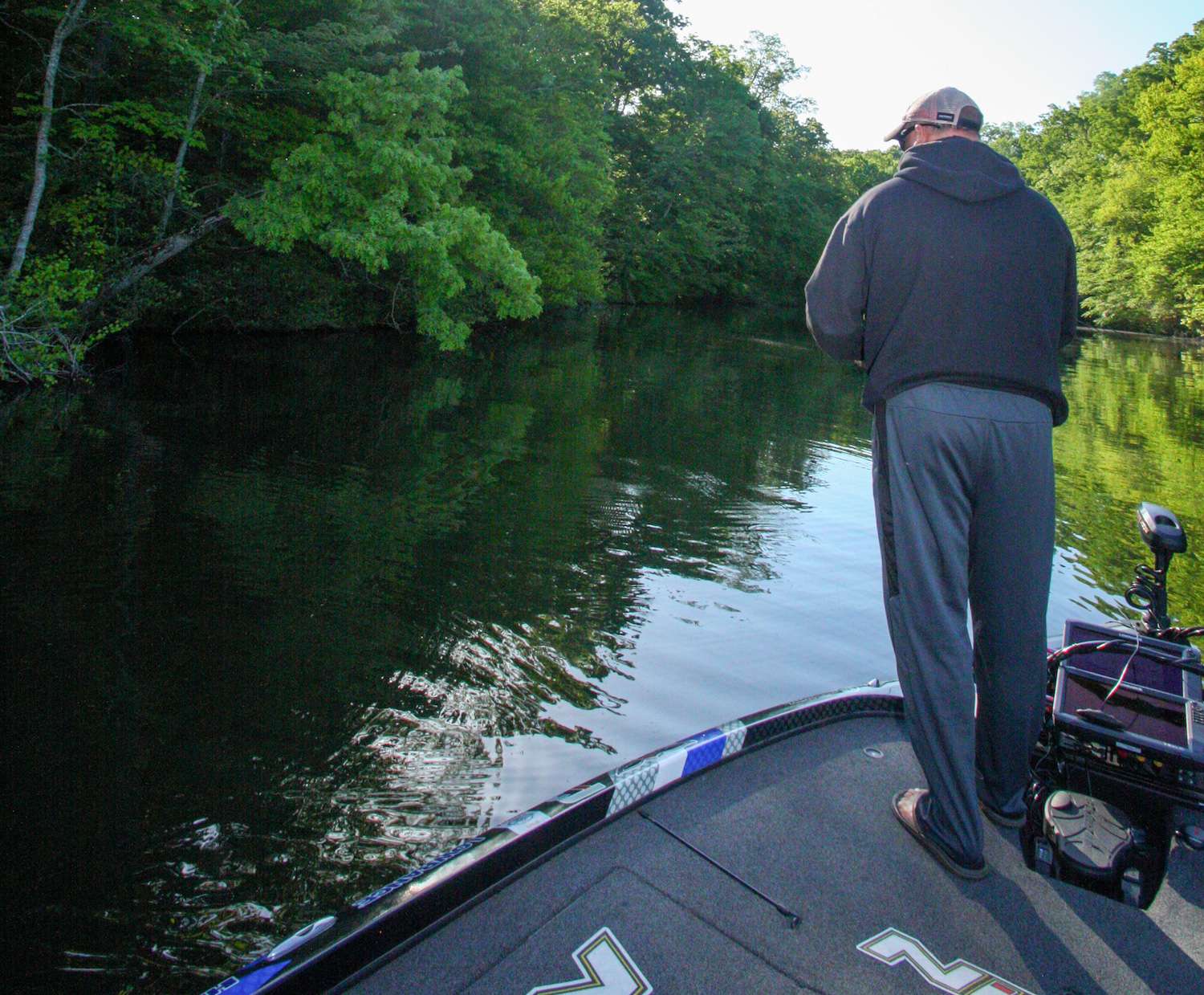
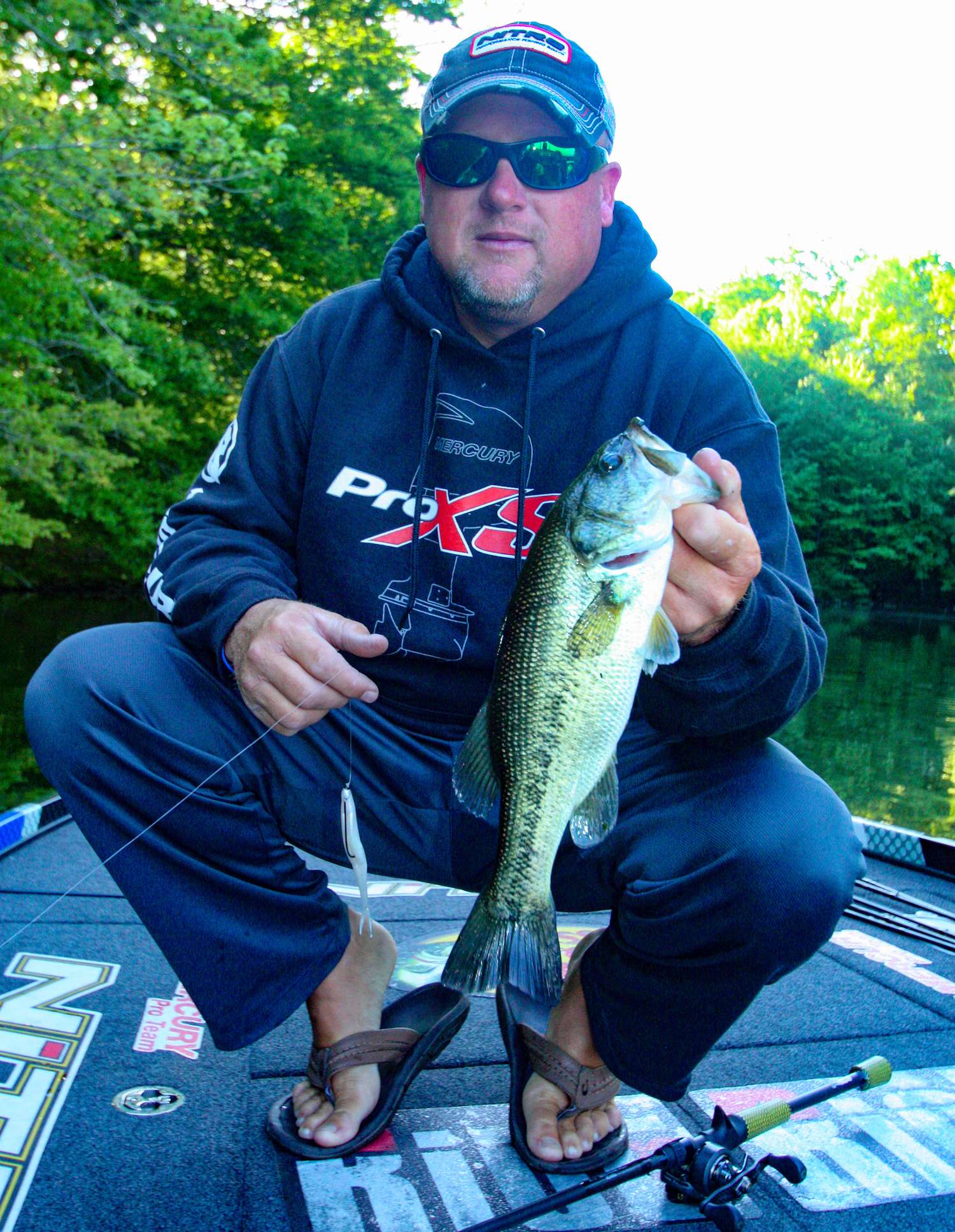
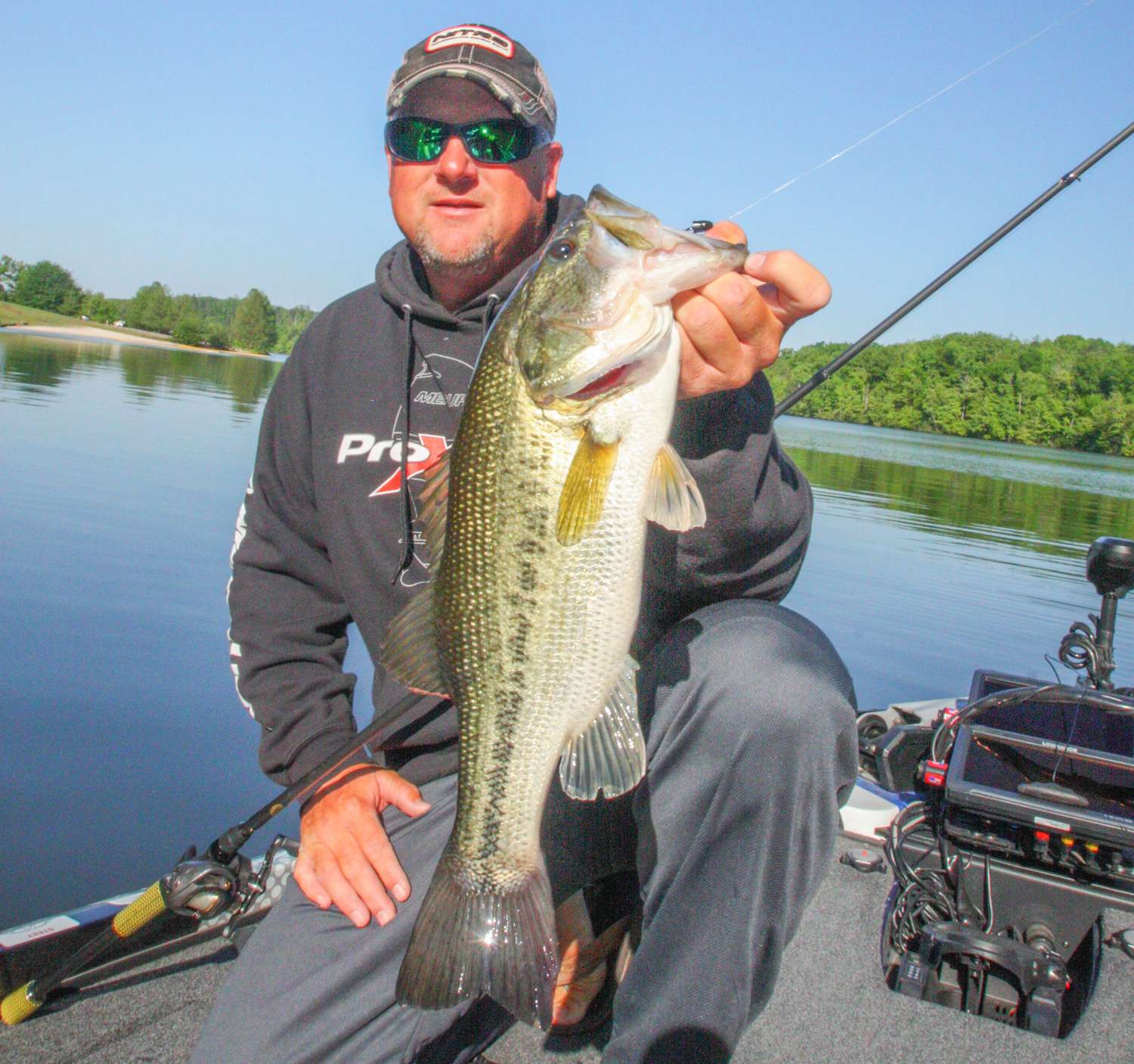
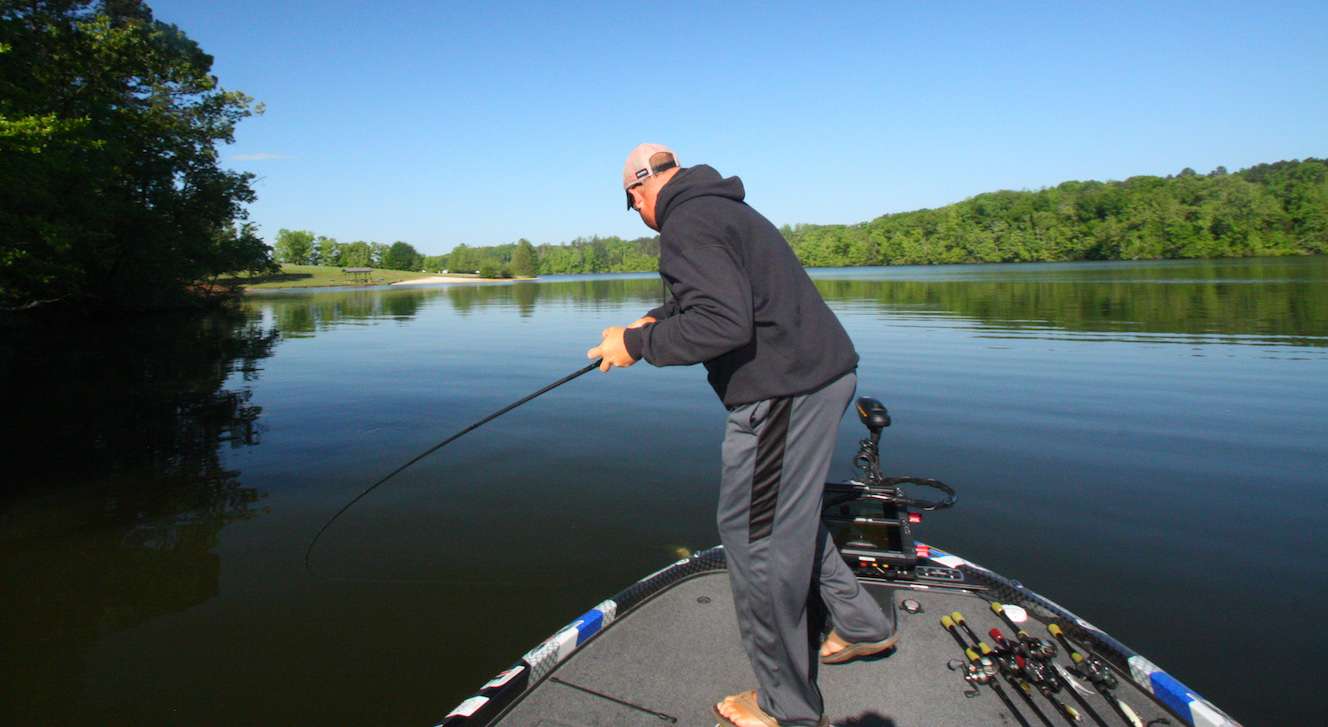
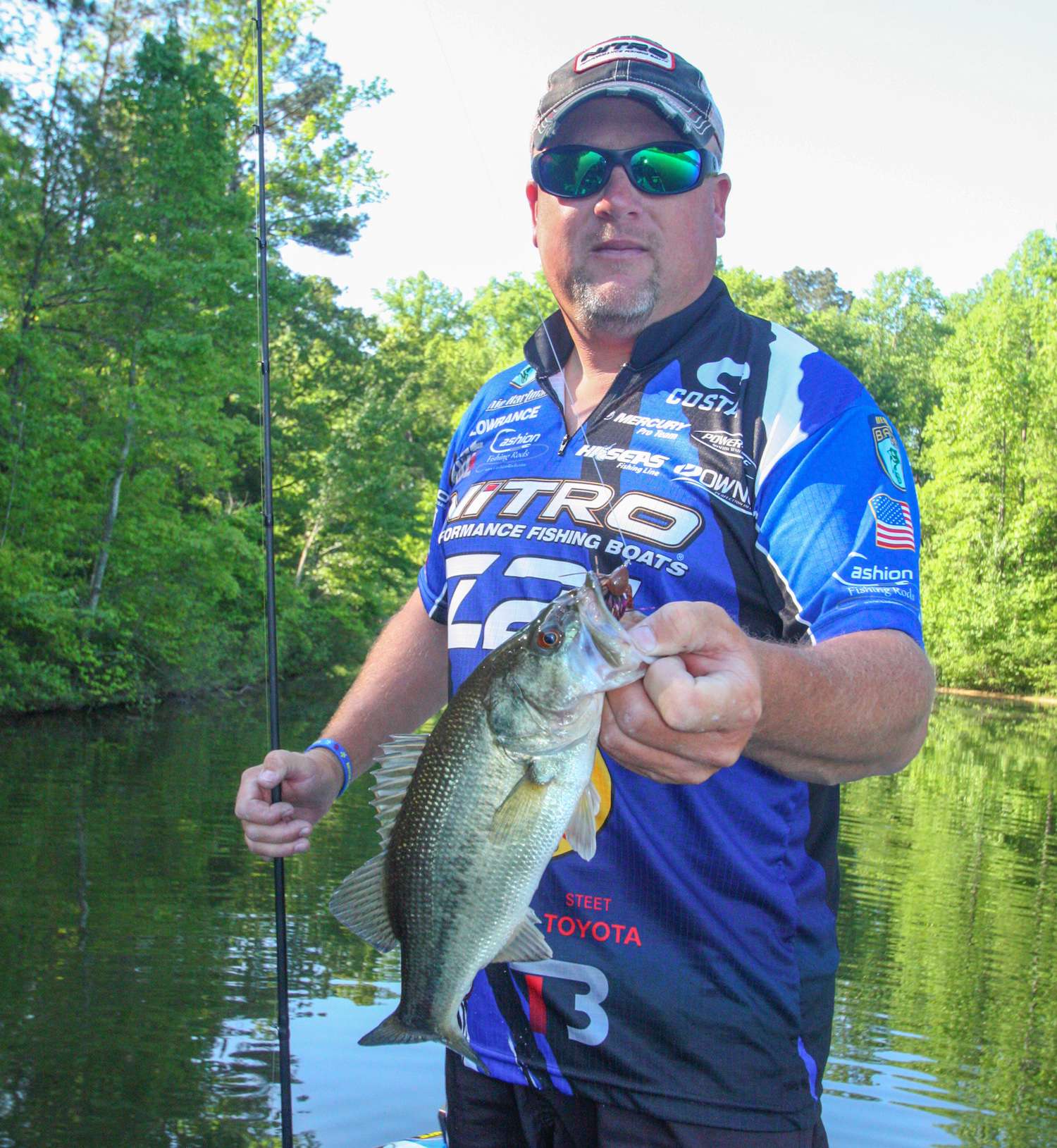
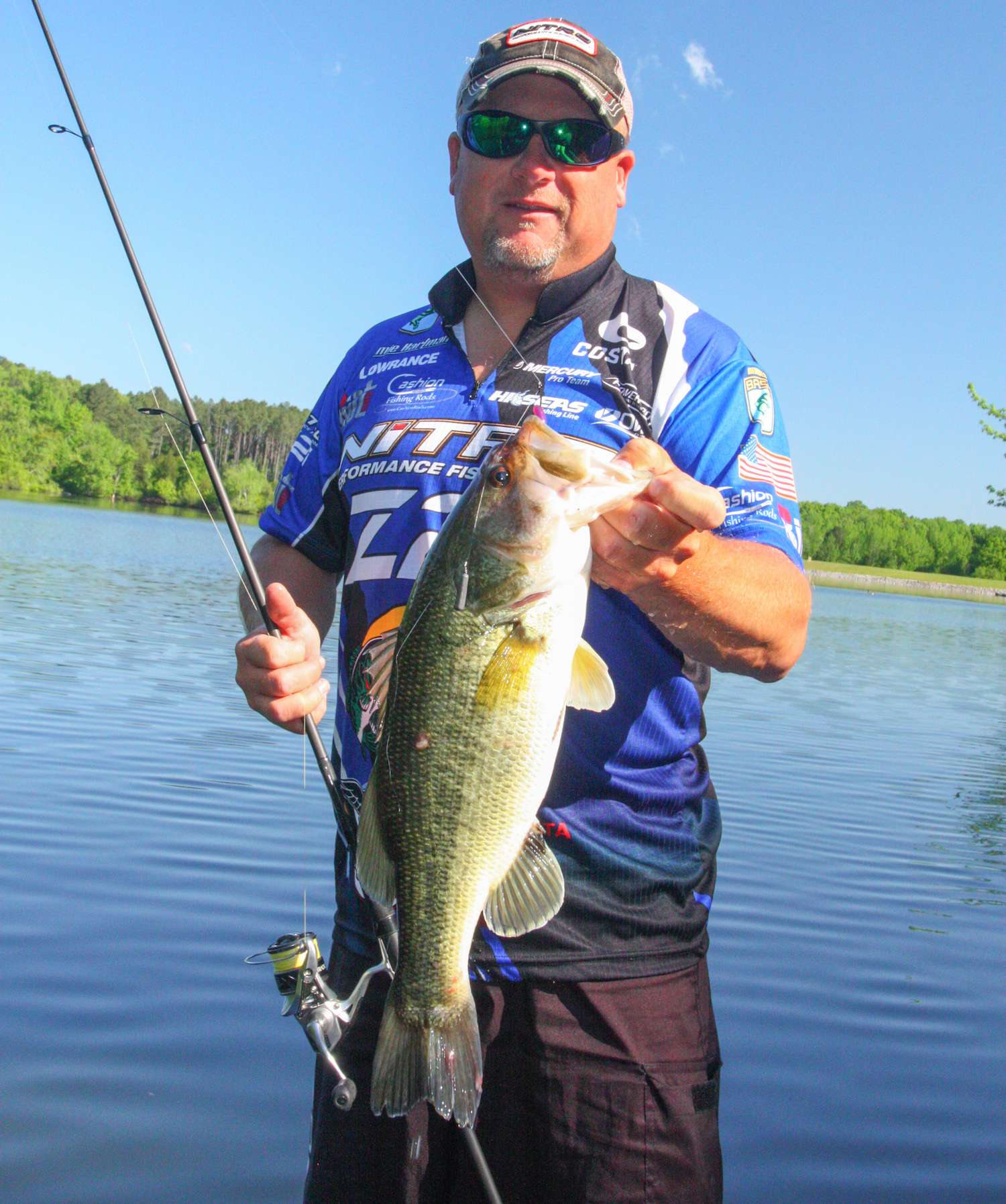
4 HOURS LEFT9:55 a.m. Hartman reluctantly leaves the 5-pounder and runs back downlake to check on a bedding fish he saw earlier. There are now three keeper bass on the nest! But they show zero interest in the Little Fuzzy Beaver. 10:07 a.m. He Texas rigs a generic white creature and flips it onto the bed. Nothing.
10:14 a.m. Hartman tries the wacky worm on the nest. âThose fish are all just swimming around, totally ignoring everything I show them. Thatâll drive you crazy!â 10:21 a.m. Hartman flips the drop-shot worm into the nest. A 3-pounder inhales it but instantly spits it out, âlike a peach pit.â
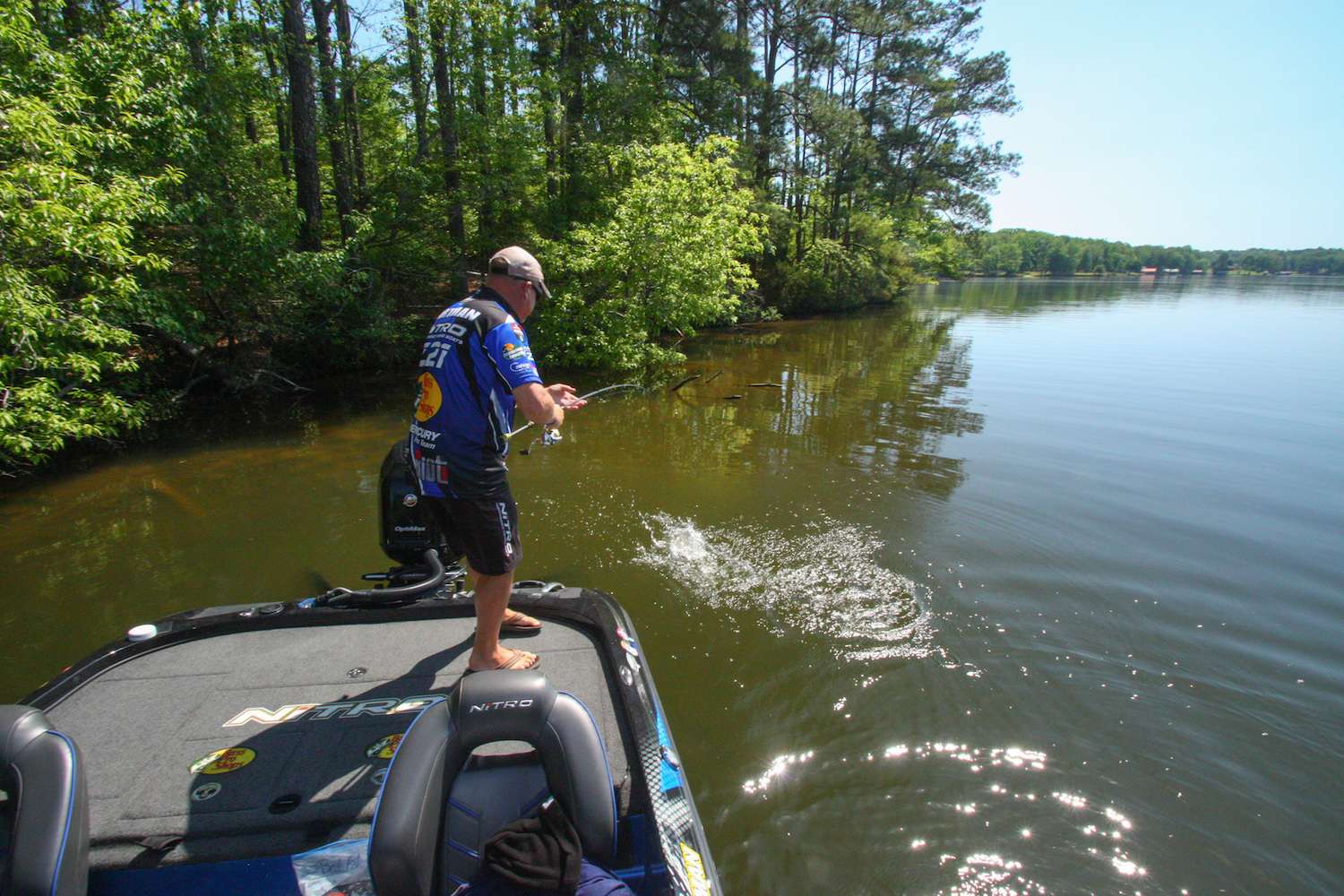
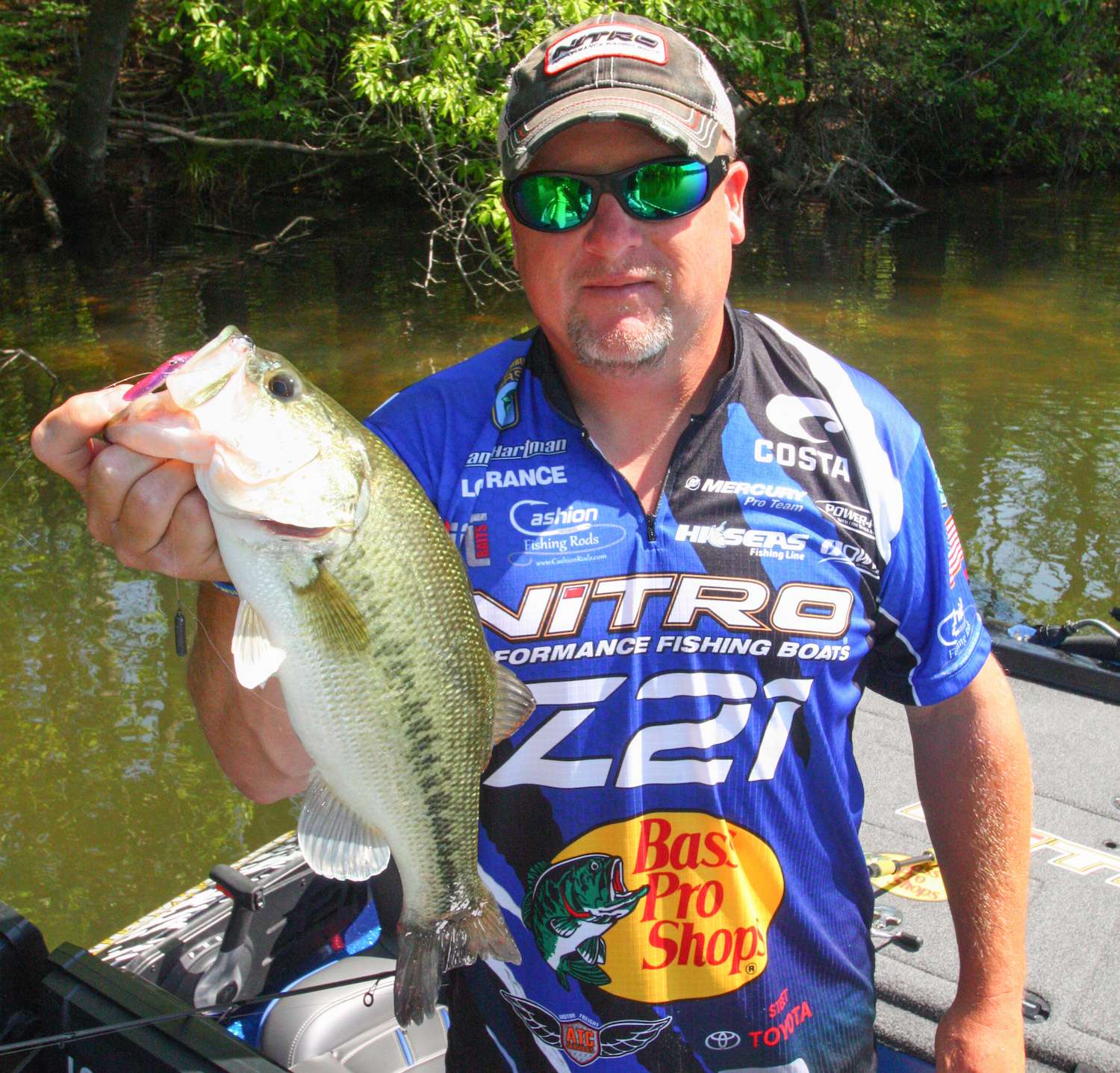
3 HOURS LEFT11:06 a.m. Hartman has left the bedding fish and run uplake into a big C-shaped cove rimmed with scattered stumps and laydowns. The water here is murkier. He rotates among his arsenal of bed lures as he covers the shoreline. No spawning beds are evident, however. 11:18 a.m. He moves to a cove with a series of shallow docks, which he probes with the wacky worm, brush hog and jig. A huge fish swims past one of the docks; itâs a carp, not a bass. 11:33 a.m. Hartman runs to a shallow tributary arm peppered with submerged stumps, which he probes with the jig, Little Fuzzy and wacky worm. The water is clearer here, but no beds can be seen. 11:42 a.m. He catches a short fish off a stump on the brush hog. 11:50 a.m. Another flip to a stump. A bass chomps the brush hog; Hartman swings, but the fish shakes loose.
2 HOURS LEFT11:55 a.m. Fishing his way out of the cove, Hartman spots a couple of empty beds. âThere are a lot more active spawners downlake. Iâm going to run back there.â 12:12 p.m. Hartman has rocketed back to the cove where he caught his 2-9. Heâs located another bed with a keeper on it and is pounding it with the brush hog and wacky worm. 12:16 p.m. The fish is unresponsive, so Hartman moves to the spot where he saw the big fish swim over a sunken log. But itâs nowhere to be seen. 12:23 p.m. Hartman exits the cove and spots a bedding bass close to a submerged stump. The bass bumps his drop-shot worm halfheartedly, then swims off. 12:25 p.m. He moves into another cove he fished earlier and spots a 4 1/2-pounder on a bed. Countless presentations with most of his lure arsenal fail to provoke a bite. âIf youâre looking for fast action, bed fishing usually isnât the best approach.â 12:44 p.m. Hartman has abandoned the contrary spawner and has moved to the coveâs mouth, where he drags the brush hog. 12:48 p.m. Hartman bags his sixth keeper, 1-2, on the brush hog. Itâs no help to his weight total.
1 HOUR LEFT12:55 p.m. Hartman rockets back to the bed with multiple bass on it. He starts with the drop-shot worm. âThey still arenât sitting on the bed; theyâre just cruising around it.â
1:07 p.m. He pitches the Little Fuzzy to the nest. A 4-pounder turns toward it, then bolts away. âThey sure are funky acting!â 1:18 p.m. Hartman gives up on these spawners. âThis shows how critical timing is to bed fishing. These females are intent on dropping their eggs, and until they do, theyâre going to be superhard to catch. Right now, itâs like watching bass on television â theyâre right in front of you, yet they wonât respond to you.â 1:24 p.m. Hartman rockets uplake to flip the wacky worm around some docks. 1:28 p.m. He bags a 1-pound keeper off a dock on the shaky head worm. No help here. 1:30 p.m. Hartman hits a big laydown with the jig. âThey havenât related much to this wood today.â
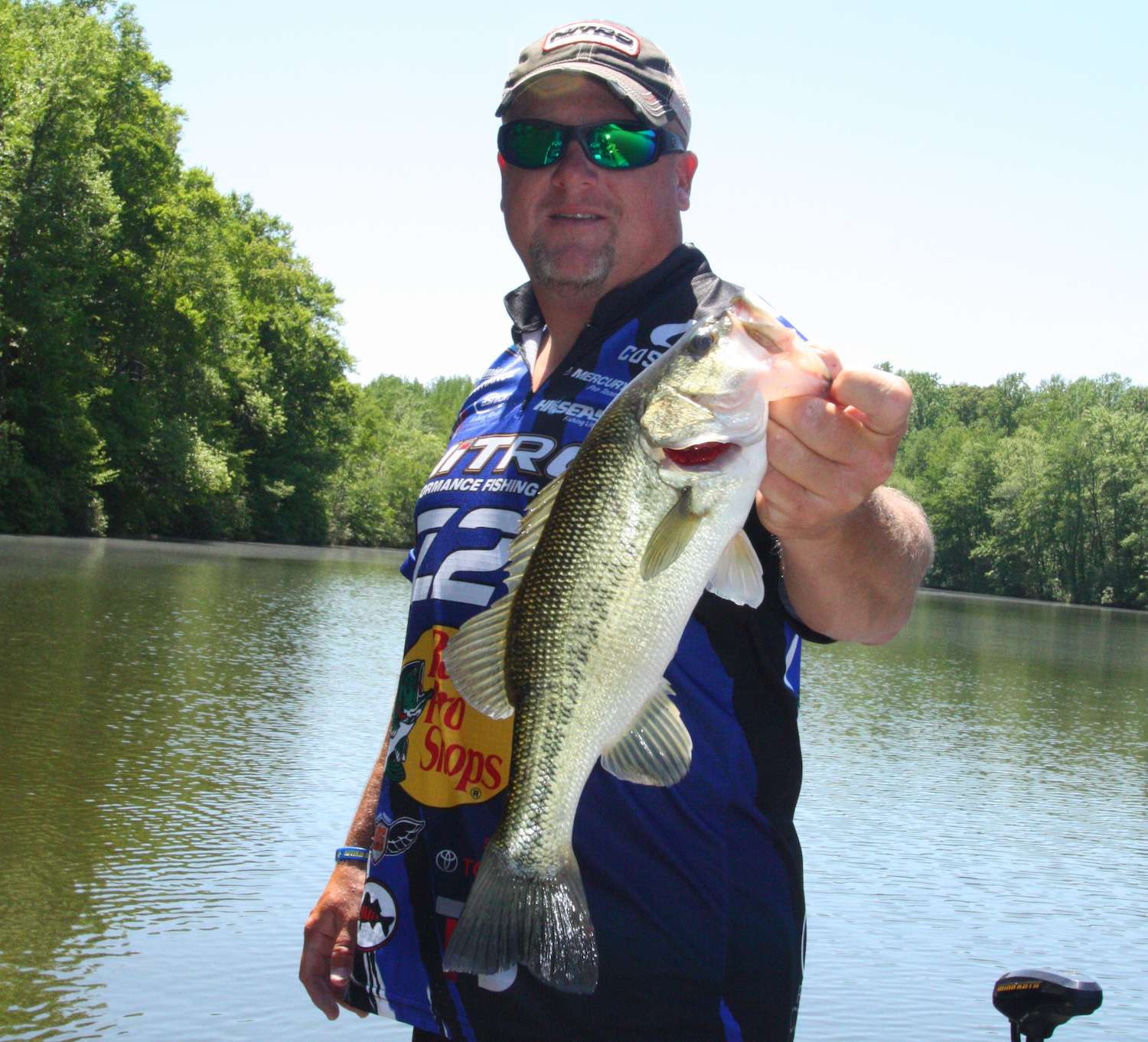
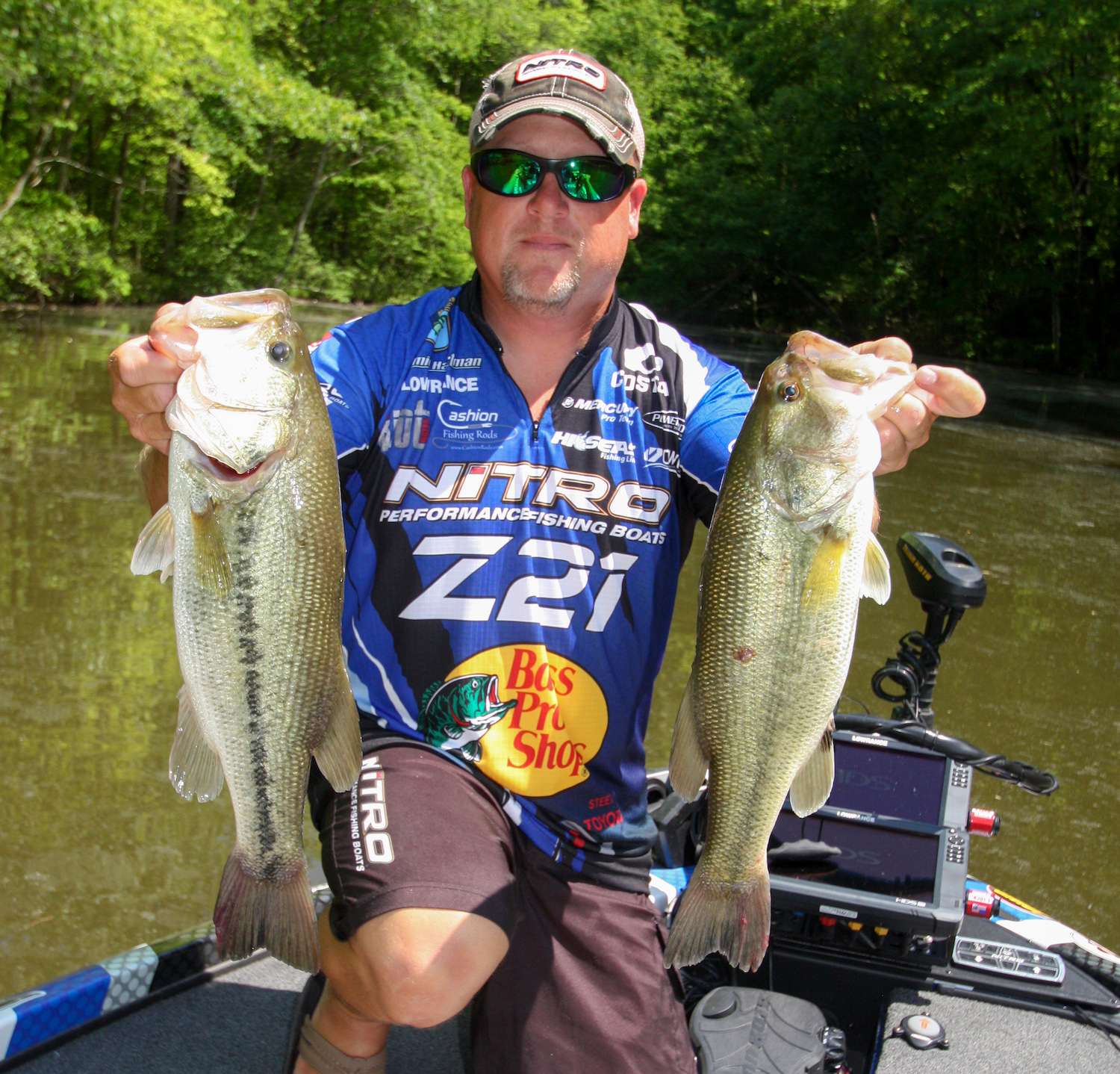
âI spent most of the day cruising the banks and caught a few decent fish on beds, but my timing wasnât ideal; most of the spawners are in that spooky stage where they arenât totally locked onto the nest,â Hartman told Bassmaster. âIf I were to fish here tomorrow, Iâd try for some
postspawn fish early on structures adjacent to spawning coves, then wait till the sun got higher to go back to bed fishing.â
WHEN AND WHERE HARTMAN CAUGHT HIS FIVE BIGGEST BASS
3 pounds, 5 ounces; green pumpkin generic brush hog creature (Texas rigged); entrance to spawning cove; 8:35 a.m.
1 pound, 8 ounces; 3/8-ounce PB&J Riot Baits jig with green pumpkin Riot Baits Tantrum trailer; spawning cove; 8:55 a.m.
3 pounds, 6 ounces; generic pink/purple/pearl finesse worm on drop-shot rig; spawning bed; 9:12 a.m.
2 pounds, 9 ounces; same lure as No. 3; spawning bed; 10:27 a.m.
2 pounds, 4 ounces; same lure as No. 2; mud point; 1:36 p.m.
TOTAL: 13 POUNDS
